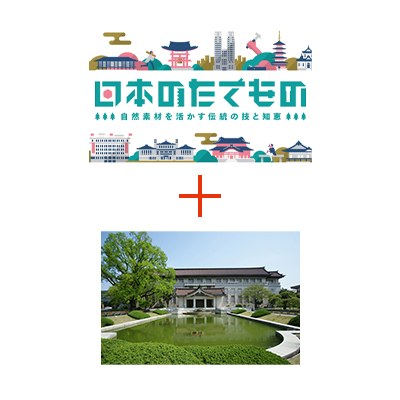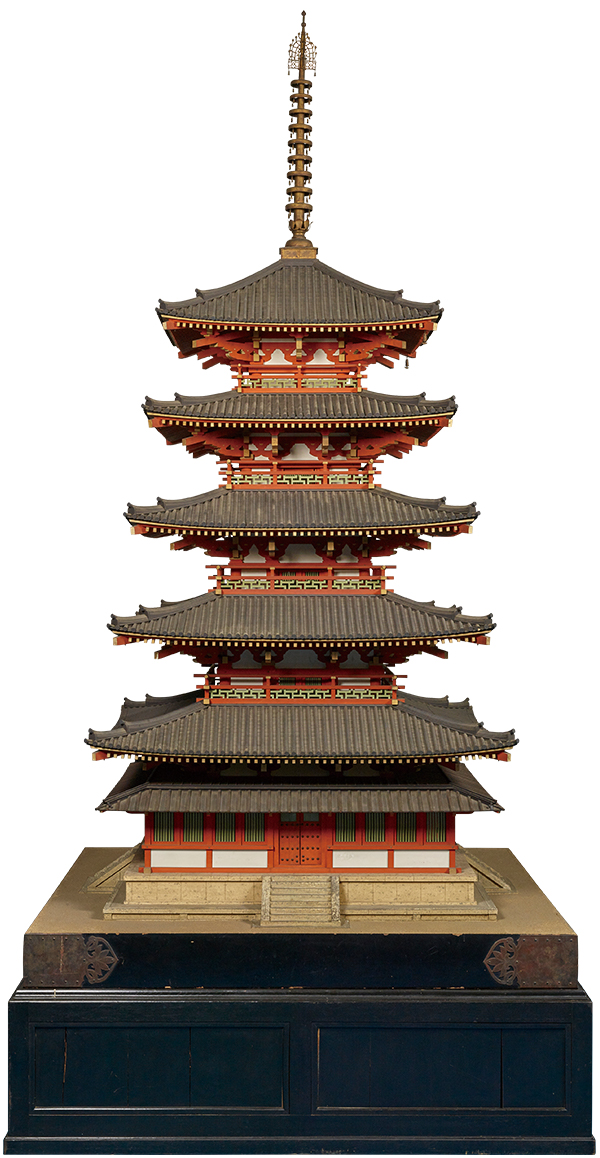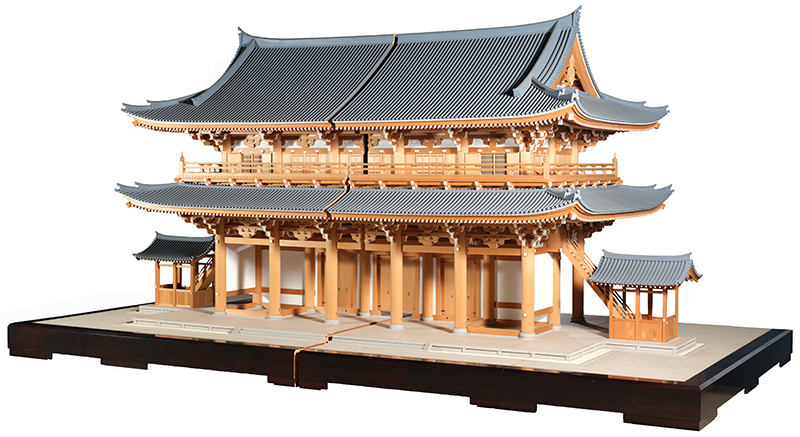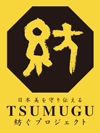展覧会のみどころ
会場テーマ:古代から近世、日本建築の成り立ち
建築の基本的役割は、人間を雨風や外敵から守ることですが、古代の住宅は、地面に竪穴を掘り、掘立柱を立てて梁(はり)と桁(けた)で固定し、合掌型に丸太を組み、その上に屋根材を葺(ふ)くシンプルなものでした。こうした手近な材料を用いた原始的な建築は、世界の各地にみられ、年代や地域によって多少の差はあるものの、おおむね似たようなものであったようです。
農耕文化の定着、社会階級の誕生、仏教の伝来といった社会的な変化は、建築物に象徴性や様式といった概念をもたらし、我が国の建築は、地域や気候といった自然による条件と、政治や宗教などの社会的条件に従いながら、変化と多様化を遂げてきました。宮殿、社寺、茶室、住宅(武家・農家・町家)、城郭など、日本建築特有の造形を備えた多種多様なかたちが生まれ、そのままの用途で現在にいたる遺構も数多く存在します。
東京国立博物館では、文化庁が「模造事業」としてこれまで製作を行ってきた国宝・重要文化財の木造建造物の模型の展示を通して、古代から近世までの日本建築の成り立ちを紹介します。自然素材の中で加工性に優れ、かつ強度が高く、日本の四季に合わせた木材を活用し、組み上げる日本の伝統技法として受け継がれてきた木組などの大工技術、檜(ひのき)の皮を重ねて屋根を葺く檜皮葺(ひわだぶき)や、椹(さわら)、杉などの薄板を重ねて葺く杮葺(こけらぶき)など、古来より用いられてきた自然素材を駆使する伝統的な技と知恵を、模型を通じて鑑賞することができます。
1.仏教の伝来と建築の様式化
飛鳥時代、仏教の伝来にともなって朝鮮半島や大陸から工匠の渡来と多様な建築技術がもたらされ、国内に数多くの寺院が建立されました。大陸由来の建築様式は、在来の建築形式や技法との融合によって様式化が進み、鎌倉時代以前の国風文化の中で生み出された「和様」、鎌倉時代初期に東大寺大仏殿を再建する際にもたらされた「大仏様」、禅宗の伝来によって導入された「禅宗様」が用いられ、その後はこの3つの様式が寺院建築の基本形となります。
ここでは、法隆寺五重塔(奈良県/国宝)、大仙院本堂(京都府/国宝)、長寿寺本堂(滋賀県/国宝)などの模型の展示によって、塔婆、仏堂、門などの建物種別を時代順に紹介し、意匠や構造にみられる様式から「日本建築らしさ」を紹介します。
|
|
|
法隆寺五重塔 1/10模型
1932年 東京国立博物館
(原建物:飛鳥時代 / 国宝)
戦前から半世紀に及んだ法隆寺「昭和の大修理」に先立ち、修理前の現状模型として昭和7年に製作。ただし、明らかに後の時代の付加部分は除いてあります。
|
東福寺三門 1/10模型
1979年 国立歴史民俗博物館
(原建物:1405年 / 国宝)
昭和44~52年の大規模な修理の成果を受け、特徴的な構造が表現できるように分割模型として製作されました。同時に二階内部の彩色模写も製作されました。
|
2.交易の要と象徴
武家屋敷、町人地、寺社境内地などが城郭を囲むように立地する城下町は、政治・経済・文化の中心として安土桃山時代後期から江戸時代中期にかけて日本全国に誕生しました。多くの人が思い浮かべる天守台に代表される城郭のイメージは、この時期に築造されたもので、戦国時代に要塞として建てられた城郭は、徐々に領国の象徴としての存在に変わっていきます。
ここでは、交易によって城下町が栄えた松本城(長野県/国宝)と首里城(沖縄県)の2つの異なるタイプの城郭を紹介します。
首里城正殿 1/10模型
1953年 沖縄県立博物館・美術館
(原建物:18世紀前半)
首里城正殿は昭和2~7年に解体修理が行われ、大正14年国宝指定、昭和20年戦災により焼失しました。模型は解体修理に参加した知念朝栄が昭和28年に製作しました。
*この作品は、平成館ガイダンスルームに展示されます。
|
3.神々への信仰と生活のかたち
古くは巨木や山などを崇めていたものが農耕社会では豊作を祈念するようになり、依(よ)り代(しろ)となった木や柱が建物に変化したものが神社の発祥であると考えられています。
建物のかたちとしては、古来の住宅を連想させ、式年造替(しきねんぞうたい)などによってそのデザインが今日まで伝えられてきました。そして、生活の場では、大陸からの影響や支配者層の生活様式に従って、寝殿造、書院造、茶室といった住機能・形式が誕生し、庶民においては、都市部では町家、農村部では農家に居住するようになっていきます。
ここでは、神社本殿の形式を示す例として、仁科神明宮本殿(長野県/国宝)、春日大社本社本殿(奈良県/国宝)など、住機能・形式を示す例として、登呂遺跡竪穴住居(静岡県/特別史跡)、慈照寺東求堂(京都府/国宝)、今西家住宅(奈良県/重要文化財)などを紹介します。
|
|
春日大社本社本殿 1/10模型
1987年 国立歴史民俗博物館
(原建物:1863年 / 国宝)
昭和51年の修理(式年造替)で作成した報告書を基に、神社建築模型の充実に向けて春日造の典型として昭和62年に製作されました。
|
|
|

 特別展「日本のたてもの―自然素材を活かす伝統の技と知恵」 + 総合文化展 事前予約
特別展「日本のたてもの―自然素材を活かす伝統の技と知恵」 + 総合文化展 事前予約![]() 作品リスト(2MB)
作品リスト(2MB)![]()









